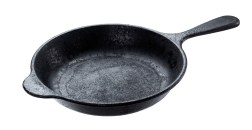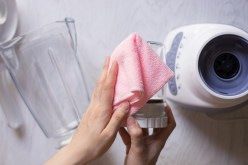The Dos and Don’ts of Cleaning and Maintaining Your Shower Glass Doors

Maintaining the cleanliness and appearance of your shower glass doors is essential for keeping your bathroom looking fresh and inviting. However, it can be challenging to know the best practices for cleaning and maintaining these delicate surfaces. In this article, we will discuss the dos and don’ts of cleaning and maintaining your shower glass doors to help you achieve a sparkling bathroom that will impress anyone who enters.
Do: Regularly Clean Your Shower Glass Doors
Regular cleaning is crucial for preventing the buildup of soap scum, mineral deposits, and hard water stains on your shower glass doors. To keep them looking their best, make it a habit to clean your shower glass doors at least once a week. Start by rinsing the doors with warm water to remove any loose debris.
Next, mix a solution of equal parts vinegar and water in a spray bottle. Spray this solution onto the glass doors, focusing on areas with visible stains or residue. Let it sit for a few minutes to allow the vinegar’s acidic properties to break down the buildup.
Afterward, use a soft sponge or non-abrasive cloth to gently scrub the glass in circular motions. Pay extra attention to corners and edges where dirt tends to accumulate. Finally, rinse thoroughly with warm water to remove any remaining vinegar solution.
Don’t: Use Abrasive Cleaners or Tools
One of the most important don’ts when it comes to cleaning shower glass doors is avoiding abrasive cleaners or tools. Abrasive cleaners can scratch or damage the surface of the glass, leading to permanent marks or an uneven appearance.
Avoid using harsh chemicals such as bleach or ammonia-based cleaners as they can also cause damage over time. Instead, opt for mild detergents specifically formulated for use on glass surfaces.
Additionally, steer clear of abrasive tools like steel wool or rough scrub brushes that can scratch or etch the glass. Stick to soft sponges or non-abrasive cloths to ensure a gentle yet effective cleaning process.
Do: Squeegee After Each Use
To prevent the buildup of water spots and mineral deposits on your shower glass doors, it’s essential to squeegee the doors after each use. This simple step can significantly reduce the amount of cleaning required and help maintain the clarity and shine of your glass.
After you finish showering, grab a squeegee and starting from the top, pull it down in a straight line, removing any excess water from the surface. Be sure to wipe off both sides of the door as well as any metal frames or handles.
By removing excess water promptly, you minimize the chances of mineral deposits forming on your shower glass doors, keeping them looking crystal clear for longer periods.
Don’t: Neglect Seals and Tracks
While it’s easy to focus solely on cleaning the glass itself, neglecting the seals and tracks around your shower glass doors can lead to potential problems down the line. Over time, these areas can accumulate dirt, soap scum, and mildew if not properly maintained.
To prevent this buildup, regularly inspect and clean the seals and tracks of your shower glass doors. Use a toothbrush or soft-bristled brush dipped in a mixture of warm water and mild detergent to scrub away any dirt or grime. Rinse thoroughly afterward with clean water.
By keeping these areas clean, you ensure proper functionality of your shower doors while preventing unsightly mold or mildew growth.
In conclusion, maintaining your shower glass doors doesn’t have to be a daunting task. By following these dos and don’ts of cleaning and maintenance, you can keep your bathroom looking pristine while prolonging the lifespan of your shower glass doors. Regular cleaning with gentle solutions, avoiding abrasive cleaners or tools, squeegeeing after each use, and not neglecting seals and tracks are key practices that will help you achieve sparkling, clear shower glass doors for years to come.
This text was generated using a large language model, and select text has been reviewed and moderated for purposes such as readability.





